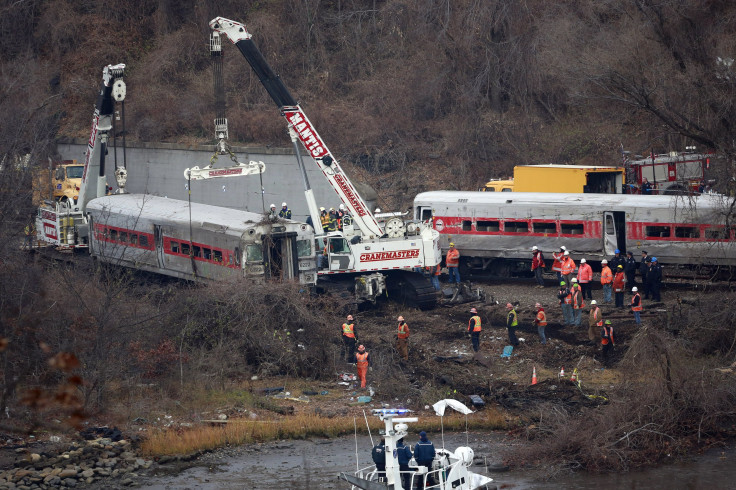America's Neglected Railroads: Report Indicates That Bronx Rail Deaths Could Have Been Avoided And What Does The Derailment Say About The State Of America's Urban Rail Network?

As the probe into Sunday’s fatal Bronx rail crash proceeds, questions are being raised about the safety record of Metro-North tracks after two similar accidents earlier in the year. The year's death toll for the system is up to seven, just one short of all the fatalities in the previous nine years.
The Metro-North system, which is inspected three times a week and carries an average of 280,000 commuters on any given weekday, saw more than 70 passengers injured in May after a train on the New Haven line derailed before colliding with another train, only two days after the Federal Railroad Administration identified that the track had safety issues. It cost $18 million to repair after the accident, according a National Transportation Safety Board report. Then in July, only 1,700 feet from Sunday’s accident site, a freight train derailed.
This sorry record puts not only Metro-North under scrutiny, but also the regulatory body that has direct oversight for the track, the FRA. But the agency says it is the responsibility of the operator to ensure that the track is maintained and repaired.
There are 385 route miles (115 miles of which are owned by the Connecticut Department of Transportation) and 795 track miles (244 miles of which are owned by CDOT) that constitute the Metro-North system. The accident that occurred in Bridgeport in May comes under the authority of the CDOT, whereas the freight derailment in July and Sunday’s accident both come under the Metropolitan Transit Authority of New York.
Neither the MTA nor the CDOT were available for comment.
The recent "Capital Needs Assessment 2015-2034" published by the MTA states that Metro North tracks will need more than $3.4 billion from 2015-2019 to bring them up to standard and nearly $9 billion through 2034.
In addition, the “Rail Modernization Study,” an April 2009 report to Congress by the Federal Transit Administration, found that more than one-third of the trains at the nation’s seven largest transit agencies are near or have already exceeded their useful lives.
What does this mean for other suburban and commuter rail systems in America?
At present there are 27 commuter railways in urban areas. Most of their trains were built between 1973 and 2000, and carry in excess of 1.5 million people daily, covering more than 4,500 miles.
Of the seven systems mentioned in the Rail Modernization Study, only a third of their track could be described as in good to excellent condition, with the remaining two-thirds anywhere from poor to adequate.
Los Angeles, for example, has one of the most extensive networks in America and operates on an annual budget of just more than $170 million with over 500 miles of track, but in traveler numbers it ranks quite low with just 42,000 passengers a day. Recent safety improvements and orders of new passenger cars were made in the aftermath of the Chatsworth accident, in which 26 people were killed and 135 injured when a train collided head on with a Union Pacific freight train. A contract was immediately signed with Hyundai to replace all the previous passenger trains, which were produced by Bombardier. The new cars, costing half of the Bombardier cars built in 1992, are coming in at $2 million each, but will incorporate all the latest technology, including crumple zones, steel beams and impact absorption technology.
The Chicago Transit Authority and Metra both serve the Chicago area and carry more than 300,000 passengers a day, but accidents are common, killing 156 people between 2001 and 2010. The CTA appeared in the Rail Modernization Study as one of the seven systems that was studied, along with Massachusetts Bay Transportation Authority, New Jersey Transit Corporation, San Francisco Bay Area Rapid Transit District, Southeastern Pennsylvania Transportation Authority, Washington Metropolitan Area Transit Authority and the MTA.
The report paints a bleak picture of a seriously neglected rail system that the American Society of Civil Engineers said would require more than $120 billion to keep just the freight rail going until 2035, never mind the price of modernizing and maintaining commuter rail, which the FRA says could cost hundreds of billions.
© Copyright IBTimes 2024. All rights reserved.






















